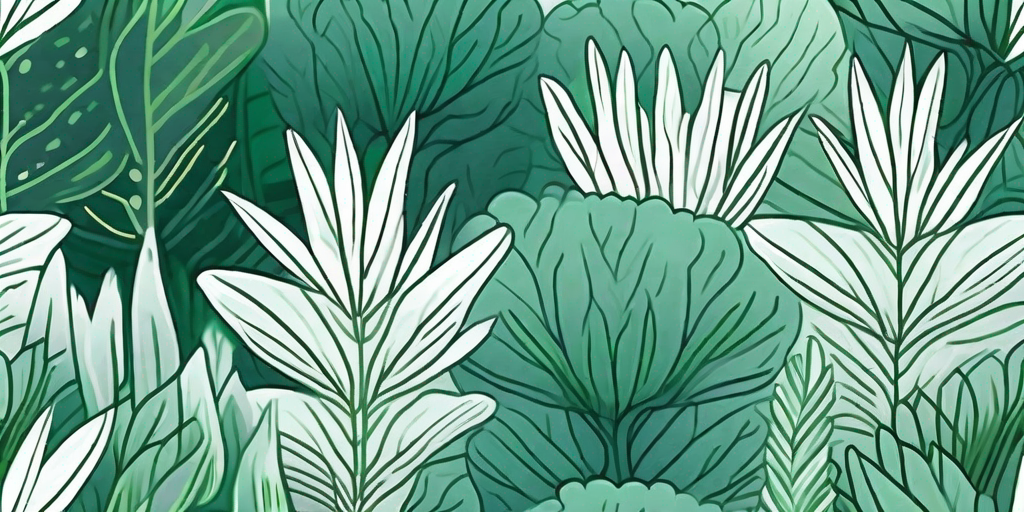
The world of gardening is a vast one, filled with a plethora of plants, each with its own unique set of needs and quirks. But if you're looking for a plant that is both lush and low-maintenance, look no further than the Hicks Yew. This evergreen shrub is a gardener's dream come true, offering year-round greenery without demanding too much of your time. So, let's roll up our sleeves and delve into the secrets of growing Hicks Yew.
The Basics of Hicks Yew
Before we get our hands dirty, let's first understand what we're dealing with. The Hicks Yew, scientifically known as Taxus x media 'Hicksii', is a hybrid yew that is popular for its dense, dark green foliage. It's a versatile plant that can be grown as a hedge, screen, or even a standalone specimen. The best part? It's a slow grower, which means less pruning for you. Now, isn't that a relief?
Native to Europe, Asia, and North Africa, this yew variety is hardy and can withstand a range of conditions. It's tolerant of shade, can handle urban pollution, and is even resistant to deer. So, if you've been losing the battle against these garden invaders, the Hicks Yew might just be your secret weapon.
Size and Growth Rate
The Hicks Yew is not a plant for the impatient. It grows slowly, typically reaching a height of 10 to 12 feet and a spread of 3 to 4 feet over a span of 10 to 20 years. But don't let this deter you. The slow growth rate means less maintenance, and the eventual size makes it perfect for creating a privacy screen or a backdrop for other plants.
While the Hicks Yew may take its sweet time growing, it's worth the wait. The dense, dark green foliage creates a lush, evergreen display that adds a touch of elegance to any garden. And let's not forget the red, berry-like fruits that add a pop of color in the fall and winter.
Planting and Care
Now that we're acquainted with the Hicks Yew, let's get down to the nitty-gritty of planting and care. Despite its hardy nature, there are a few things to keep in mind to ensure your Hicks Yew thrives.
Firstly, while the Hicks Yew is tolerant of a range of conditions, it prefers well-drained soil and a spot that gets full to partial sun. So, choose your planting site carefully. Secondly, although it's a slow grower, it's not a fan of neglect. Regular watering, especially during dry spells, is crucial. Lastly, while it doesn't demand frequent pruning, a little trim now and then can help maintain its shape.
Watering and Fertilizing
When it comes to watering, the Hicks Yew likes consistency. It prefers soil that is consistently moist but not waterlogged. So, water regularly, but make sure your soil drains well to prevent waterlogging. If you're unsure about when to water, a simple finger test should do the trick. Stick your finger into the soil up to the second knuckle. If it feels dry, it's time to water.
As for fertilizing, the Hicks Yew isn't too picky. A general-purpose garden fertilizer applied once a year in early spring should suffice. However, if your soil is particularly poor, you might want to consider a more frequent feeding schedule.
Pruning and Shaping
Pruning is where the Hicks Yew allows you to unleash your inner artist. While it doesn't require frequent pruning, a little shaping can go a long way in enhancing its appearance. The best time to prune is in late winter or early spring before new growth begins.
When pruning, remember that the Hicks Yew is a slow grower. So, be conservative with your cuts. A little goes a long way. And don't worry if you make a mistake. The Hicks Yew is forgiving and will bounce back with time.
Common Problems and Solutions
While the Hicks Yew is a hardy plant, it's not immune to problems. However, with a little knowledge and some timely intervention, you can keep your Hicks Yew healthy and thriving.
Yellowing Foliage
Yellowing foliage is a common issue with Hicks Yew, often caused by overwatering or poor drainage. If you notice your yew's leaves turning yellow, check your watering schedule and ensure your soil drains well. If necessary, amend your soil with organic matter to improve drainage.
Pests and Diseases
The Hicks Yew is resistant to deer, but it can fall prey to other pests like mealybugs and scale. Regular inspection and timely treatment can help keep these pests at bay. As for diseases, root rot can be a problem if the soil is waterlogged. Again, good drainage is key to preventing this issue.
Frequently Asked Questions
- Is Hicks Yew toxic?
- Yes, all parts of the Hicks Yew, except the red aril surrounding the seed, are toxic if ingested. So, keep it out of reach of children and pets.
- Can Hicks Yew grow in shade?
- Yes, Hicks Yew is shade-tolerant and can grow in full to partial shade. However, for optimal growth, a spot that gets full to partial sun is ideal.
- How often should I water my Hicks Yew?
- Water your Hicks Yew regularly to keep the soil consistently moist. However, avoid overwatering as it can lead to root rot.
In conclusion, the Hicks Yew is a versatile, hardy, and low-maintenance plant that can add a touch of lush, evergreen elegance to any garden. With a little care and patience, you can enjoy the beauty of this plant for years to come. So, why not give it a try? Your garden will thank you for it.















